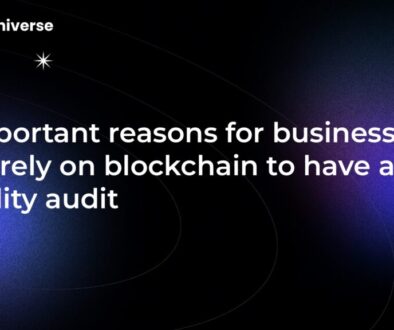Solana vs Ethereum: The Battle for Institutional Preference

The blockchain world is constantly buzzing with innovation, and one of the most talked-about rivalries is Solana vs. Ethereum. Both platforms offer unique advantages, but when it comes to attracting serious institutional investment, the scales might tip differently. A recent analysis by crypto bank group Sygnum suggests that despite Solana’s impressive transaction volumes and fee generation dominance, Ethereum’s established strengths might still make it the preferred choice for traditional financial institutions. This post delves into this battle for institutional preference, examining the strengths and weaknesses of both giants and what it means for the future of crypto adoption.
Ethereum: The Bedrock of Decentralization and Institutional Trust
Ethereum has long been the cornerstone of the decentralized web. Its enduring appeal to institutions stems from several key factors:
- Unmatched Security and Stability: Ethereum’s mature ecosystem boasts a high degree of decentralization, minimizing single points of failure and enhancing security. Its proven track record and stability over many years are crucial for risk-averse institutions.
- Vast and Developed Ecosystem: Ethereum supports a massive array of decentralized applications (dApps) and smart contracts, forming a foundational infrastructure for innovation across various sectors, from finance to art.
- Dominance in Key Use Cases: Ethereum remains the leader in critical areas like Decentralized Finance (DeFi) and tokenization. Its ability to facilitate complex financial instruments and tokenized real-world assets (RWAs) is highly attractive to institutions looking to bridge traditional finance with blockchain technology.
- Potential for Long-Term Value: Post-merge, Ethereum’s monetary policy, which can lead to low supply growth or even deflationary pressures, coupled with increasing demand from institutional products like Exchange Traded Funds (ETFs), positions it as a strong candidate for long-term value preservation.
- Growing Regulatory Clarity and Acceptance: Regulatory bodies worldwide are increasingly focusing on Ethereum. Initiatives like the SEC’s roundtable on tokenization and research by institutions like the Federal Reserve into tokenized assets on Ethereum signal a growing acceptance and a clearer path towards integration with traditional finance. This regulatory engagement provides a level of comfort for institutions.
Solana: Speed, Efficiency, and the Quest for Stability
Solana has rapidly emerged as a formidable competitor, capturing attention with its impressive performance metrics and a burgeoning ecosystem. Its key attractions include:
- Blazing Transaction Speeds and Low Fees: Solana’s architecture, which uniquely combines Proof of History (PoH) with Proof of Stake (PoS), allows for significantly faster transaction processing and lower fees compared to Ethereum’s mainnet. This makes it highly suitable for high-frequency activities, gaming, payments, and certain DeFi applications.
- Growing DeFi and NFT Presence: Solana’s ecosystem has seen substantial growth, with popular projects in the NFT space and DeFi protocols gaining traction. Improved tooling, such as the Anchor framework, is also accelerating development and attracting users.
- High Staking Yields: Solana often offers attractive staking yields for its SOL token, which can be appealing to investors looking for passive income opportunities within the ecosystem.
However, Solana faces its own set of challenges that institutions are keenly observing, as highlighted by Sygnum:
- Reliance on Memecoins: A significant portion of Solana’s on-chain activity and fee generation, particularly in Decentralized Exchange (DEX) revenue, has been driven by the memecoin phenomenon. This reliance raises concerns about long-term revenue stability, as the popularity of memecoins can be highly volatile and trend-driven.
- Tokenomics Concerns: Some analysts, including those at Sygnum, have pointed out potential concerns with Solana’s tokenomics, suggesting they might hinder the token’s long-term value accrual and growth compared to Ethereum’s evolving economic model.
- Network Stability: While significantly improving, Solana has faced instances of network congestion and outages in the past, which can be a deterrent for institutions requiring unwavering reliability and uptime for their operations.
Solana vs. Ethereum: A Direct Comparison for Institutions
When institutions evaluate Solana and Ethereum, they weigh several critical factors:
- Transaction Speed and Fees: Solana currently leads in raw transaction speed and lower fees on its base layer. Ethereum is addressing this primarily through Layer 2 scaling solutions and ongoing upgrades, but Solana offers a more immediate high-throughput experience on Layer 1.
- Scalability: Both platforms are striving for greater scalability. Solana is designed for high throughput from the ground up. Ethereum’s strategy involves a combination of mainnet improvements focused on supporting Layer 2s and a thriving ecosystem of these scaling solutions.
- Security: Ethereum’s longer history, larger number of validators, and more battle-tested security model generally give it an edge in perceived security, a paramount concern for institutions. Solana’s security is robust but has faced more scrutiny due to past network incidents and its different consensus mechanism.
- Ecosystem Size and Maturity: Ethereum boasts a significantly larger and more mature ecosystem of developers, dApps, and tools. Its network effects are substantial. Solana’s ecosystem is growing rapidly but is still younger and less extensive.
- DeFi and NFT Markets: Ethereum remains the dominant force in both DeFi (in terms of Total Value Locked – TVL) and the high-value NFT market. Solana, however, is making significant inroads, particularly with lower-cost NFTs and fast-growing DeFi protocols, steadily increasing its market share.
The Institutional Verdict: Why Ethereum Often Remains the Preferred Choice
Despite Solana’s impressive technical capabilities and growing ecosystem, Sygnum’s analysis highlights why many traditional financial institutions may still favor Ethereum. The core reasons often boil down to trust, stability, and sustainable value propositions:
- Proven Track Record and Longevity: Ethereum has been operational for much longer than Solana, weathering various market cycles and demonstrating resilience. This history provides a level of comfort and predictability that institutions value highly.
- Perceived Security and Decentralization: Ethereum’s larger, more decentralized validator set and its battle-hardened infrastructure are often perceived as offering a higher degree of security guarantees, crucial for managing substantial institutional assets.
- Revenue Stability and Use Cases: As Sygnum points out, Solana’s current revenue model, with a heavy reliance on memecoin-driven transaction fees, can be seen as less stable and sustainable compared to Ethereum. Ethereum’s revenue is derived from a wider range of established use cases, including robust DeFi protocols, high-value NFTs, enterprise applications, and the burgeoning field of tokenization of real-world assets (RWAs). Institutions are more likely to invest in platforms with diverse and stable revenue streams.
- Tokenomics and Value Accrual: Concerns about Solana’s tokenomics, as mentioned by Sygnum, can impact institutional confidence in the long-term value appreciation of its native token (SOL) compared to Ether (ETH), especially post-Merge with ETH’s potentially deflationary mechanics and staking rewards.
- Regulatory Engagement and Familiarity: Ethereum has seen more direct engagement and discussion from regulatory bodies globally. While this doesn’t mean full regulatory approval, this level of attention and research indicates a pathway towards integration with traditional finance that is perhaps more clearly defined and understood for Ethereum at this stage.
Sygnum’s perspective suggests that for Solana to truly challenge Ethereum for broad institutional preference, it needs to demonstrate more consistent, diversified revenue streams from use cases beyond speculative trading, such as robust tokenization platforms, deeper enterprise adoption, and institutional-grade DeFi products.
The Evolving Landscape: A Battle Far From Over
The competition between Solana and Ethereum is a powerful catalyst for innovation within the blockchain space. Solana’s technological prowess, particularly its speed and low costs, makes it an undeniably attractive platform that is rapidly carving out significant market share in areas like high-frequency DeFi, gaming, and NFTs.
However, for institutional adoption, the game often plays out on a longer timescale, prioritizing security, stability, regulatory outlook, and proven, sustainable use cases. In this arena, Ethereum currently maintains an edge due to its established ecosystem, robust security posture, and the diverse, more mature nature of its economic activity.
Sygnum’s analysis underscores a key point: while Solana leads in certain performance metrics, its ability to cultivate stable, long-term value and diversify its revenue sources away from volatile trends will be crucial in swaying significant institutional capital. The battle for institutional preference is dynamic and ongoing. As both platforms continue to evolve—Ethereum with its Layer 2 ecosystem and Solana with its performance enhancements and ecosystem growth—the landscape could certainly shift. For now, Ethereum’s deep roots and perceived stability keep it at the forefront for many large-scale investors, but Solana’s relentless progress ensures it remains a formidable contender to watch closely in the race for institutional capital.


